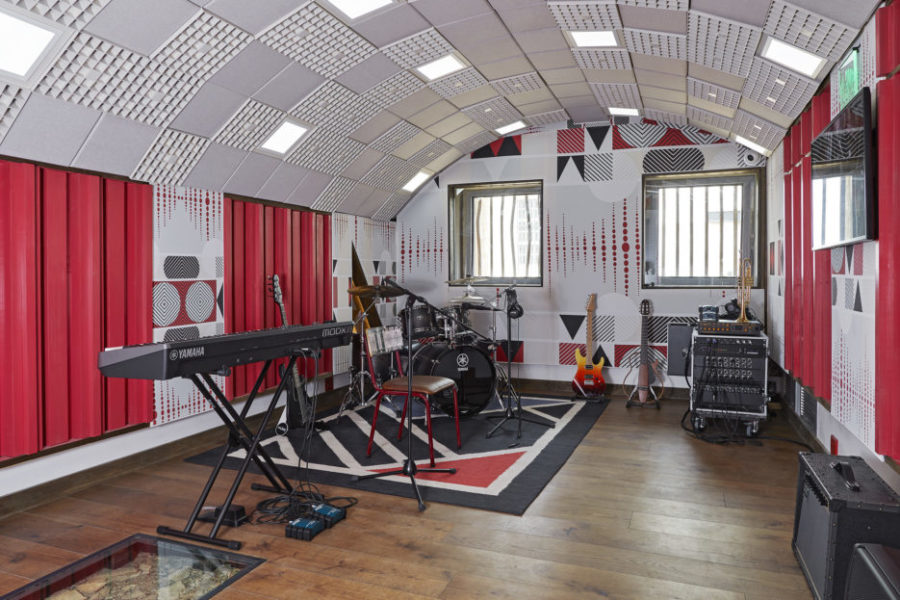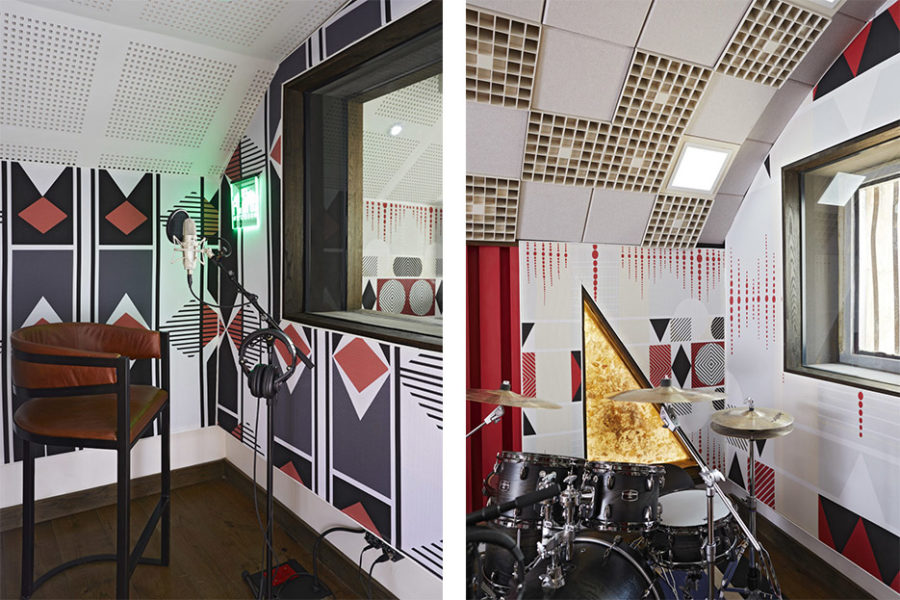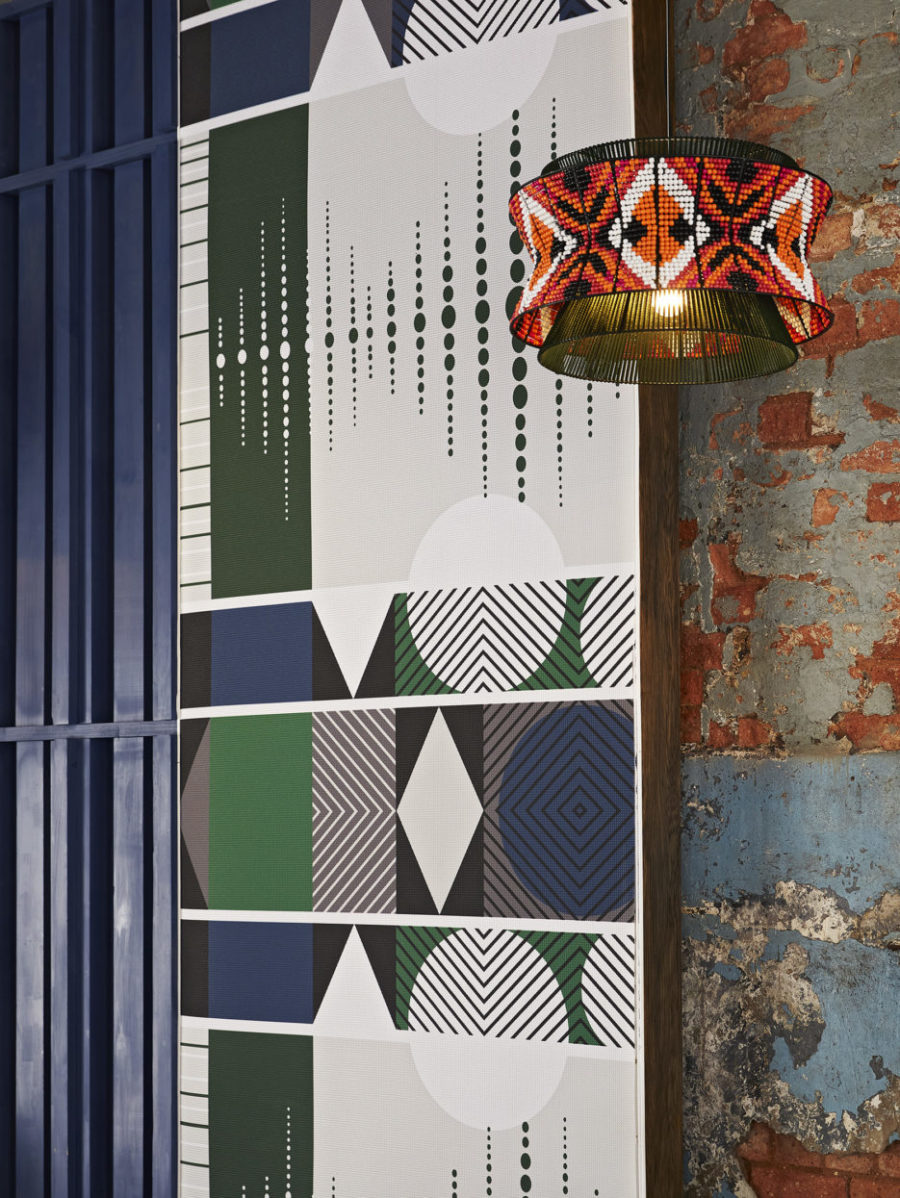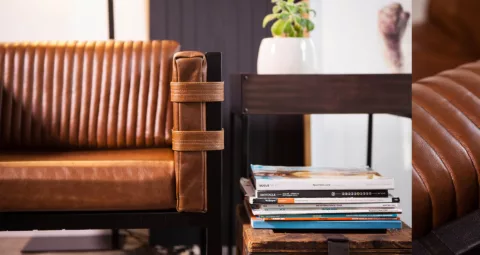Photographs by Elsa Young

Johannesburg’s Constitutional Hill is the new home of the strikingly designed and just-launched Flame Studios. Named for the Flame of Democracy, this world-class music recording studio opened its doors in February 2021. The interior design demonstrates stellar creative direction by Tracy Lynch of Studio Lee Lynch and the Nando’s design programme. Flame Studios is more than just a music studio – it’s a culmination of design, architecture and art.

Flame Studios has a distinctive and authentic South African aesthetic. There is a decided vibrancy thanks to Lynch, who was commissioned by Nando’s, the sponsor of this new space. She conceived of the scheme and selected key pieces from local designers such as TheUrbanative, Mash. T Design Studio, Pedersen and Lennard, Dokter and Misses, Glorinah Mabaso, Siyanda Mbele, Naturalis and others.
The first impression is the bold use of colour. In the rehearsal room, the corrugated wall panels and geometric ceiling panels used for soundproofing appear in a deep blue. In another room, these same blue panels find their counterparts in lush green velvet couches. In the recording booth, black, white and grey elements are offset by bold red accents. Yellow is used only once – a modern yellow server stands in front of a window like a glowing beacon.


After the initial rush of colour, the intricacies of the interior design begin to reveal themselves. The walls are festooned with modern interpretations of traditional African patterns in shades of blue, green, black and red. The various, eye-catching patterns hail from Mabaso, one of the winners of the Clout Designers Industry Days Fired Up by Nando’s, which took place at 100% Design South Africa 2019. Naturalis’s vintage-inspired school chairs in plywood and steel are given an African twist by applying these same patterns to their surfaces.

A felt-covered, two-toned blue occasional chair by Casamento sits in one corner and upon closer inspection reveals vibrant yellow stitching and beadwork. Ottomans covered in monochromatic fabric by The Mill Fabrics are scattered throughout.
Mbele’s bright orange circular rug with a sun-inspired design cleverly mimics the roundness of the lights suspended above it. Beaded, drum-shaped chandeliers by Thabisa Mjo of Mash. T Design Studio hang interspersed with simple industrial pendants. Mjo is the first local designer to have her work form part of the permanent collection of the renowned Museum of Decorative Arts in Paris, France. She also happens to be one of the very first winners of the Nando’s Hot Young Designer Talent Search (Nando’s HYD).

In all, the atmosphere reflects South Africa’s triumphant creative spirit. Amplifying this, is the sensitivity to the past and the significance of Flame Studio’s location. Constitutional Hill used to be the place where South African Struggle heroes were detained; this troubled history is acknowledged by leaving the exterior untouched and the passageway upon entry untreated. Within, sections of exposed brick and broken cement have been left visible between the vibrant panelling and bright furniture pieces.
“Respecting the heritage and history of the spaces was a key design focus. Sections of the walls and floor in the studio area were framed and left exposed, revealing the aged walls, which were then beautifully lit to highlight the magnificent patina of the architecture and remind all of the building’s powerful history,” says Lynch.
The message is undeniable: the past has been honoured by integrating it into this space of profound change. The overall result is a celebration of South African contemporary design and proof of what can be achieved through South African vision and creativity.

